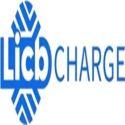Notifications

9 minutes, 14 seconds
-34 Views 0 Comments 0 Likes 0 Reviews

The Transition from Gas Pumps to Electric Vehicle (EV) Chargers: A Complex Shift for Fuel Retailers
The shift from traditional gas pumps to electric vehicle (EV) chargers at fueling stations is not as simple as replacing one pump with another. While adding China EV chargers may seem like a straightforward solution, the transition involves a host of technological, financial, and operational complexities that many fuel retailers are still grappling with.
Most gas stations that have begun offering EV charging primarily provide DC fast chargers, which can charge most EVs up to 80% in 20-30 minutes, depending on the vehicle model. These fast chargers replicate the convenience of traditional gas stations by allowing drivers to recharge quickly. In addition to these, many stations also offer Level 2 chargers, which are slower but more suited for longer stops, providing a gradual and more accessible charging solution.
Despite the growing demand for electric vehicles, many gas stations are hesitant to invest in EV charging infrastructure. The primary barriers to adoption include:
Cost of Installation: Installing high-speed chargers requires substantial upgrades to a station’s electrical infrastructure, including new transformers, service lines, and grid connections. These upgrades can be expensive, especially for stations with older electrical systems.
Uncertain Profitability: Unlike gasoline, which has a well-established pricing model, EV charging lacks clear revenue streams. There is ongoing debate about how much drivers should pay, with some expecting free or very low-cost charging. This uncertainty creates a significant risk for gas stations.
The installation costs for fast chargers can vary widely, ranging from $50,000 to over $200,000. These costs are determined by factors like existing infrastructure and the scale of electrical upgrades required. The price tag does not include other hidden costs such as the loss of valuable parking spaces, maintenance, and the development of payment systems for customers.
Even after the chargers are installed, gas stations face an uncertain business model. Fuel retailers traditionally make the majority of their revenue from fuel sales, as well as ancillary services like maintenance and car washes. For EV chargers, however, the revenue streams are less predictable. To compensate, gas stations may need to rely on retail offerings—like food, coffee, or convenience items—to make up for potential charging revenue losses.
Increasing the number of EV charging stations is essential for the widespread adoption of electric vehicles. There are several strategies to enhance charging station density:
Strategic Location Placement: Install chargers in high-traffic areas or places with long dwell times, such as apartment complexes, retail centers, transportation hubs, and office parks. Locations like airports and train stations, where passengers spend considerable time waiting, are also ideal for chargers.
Educational Campaigns: Publicizing the installation of EV chargers can encourage other businesses to follow suit. This awareness not only benefits current EV drivers but also helps build momentum for the broader adoption of charging infrastructure.
Boston Consulting Group (BCG) has provided several key strategies for fuel retailers looking to integrate EV charging stations:
Shift Focus to the Customer Experience: Fuel stations have traditionally centered their business around fuel and vehicle services. To succeed in the EV landscape, BCG suggests that retailers should shift their focus to enhancing the overall customer experience. This could include healthy food options, comfortable seating, and entertainment for customers waiting while their vehicles charge.
Enhance the Charging Experience: To stand out, EV charging stations should prioritize customer service. Offering loyalty programs, digital payment options, and special promotions can make the charging experience more enjoyable and convenient, encouraging repeat business.
Leverage Partnerships and Incentives: Gas stations should partner with EV charging infrastructure companies and local governments to take advantage of available tax credits, grants, and other financial incentives. Companies like ChargePoint are already working with fuel retailers to help plan and install charging stations, providing valuable support and advice to navigate regulatory hurdles and offset installation costs.
Several critical factors must be addressed when installing EV chargers:
Electrical Demand Assessment: Installing high-powered chargers, particularly Level 3 fast chargers, requires significant upgrades to the station’s electrical infrastructure. This may involve new transformers and service lines, which can add considerable costs, especially at stations with outdated systems.
Site Selection: The placement of EV chargers should be well-thought-out, ensuring they are easily accessible without obstructing traditional fuel pumps or creating traffic flow issues. Proper planning ensures a smooth experience for both fueling and charging customers.
Charging Pile Layout: The layout should accommodate different EV types and allow for future expansion. Designing scalable systems will save time and money when demand for chargers increases.
Licensing and Permitting: Gas stations need to secure the appropriate permits and approvals for installing EV chargers. Local regulations vary depending on charger types, so working with experts who understand the permitting process is essential.
Safety Protocols: Given the high voltage involved in EV charging, safety measures must be in place, such as emergency shut-offs and clear signage. Training staff on how to handle potential issues and performing regular maintenance are crucial to ensure safe operations.
As the demand for electric vehicles grows, gas stations must adapt to the evolving market. Installing EV chargers presents both challenges and opportunities. To succeed, fuel retailers must not only upgrade their infrastructure but also innovate their business models to cater to the unique needs of EV drivers.
In the future, gas stations that embrace this shift will play a vital role in the electric mobility ecosystem. By offering a combination of fast charging, comfortable amenities, and loyalty programs, fuel retailers can enhance the customer experience while remaining profitable. The transition from gas to electric is not just about swapping pumps—it’s about rethinking the entire business model and customer journey to meet the demands of modern transportation.
The transition to electric vehicle charging is inevitable, and gas stations must evolve to stay competitive. While the upfront costs and uncertainties may seem daunting, fuel retailers that invest in the future of EV infrastructure will be well-positioned to thrive in the new era of clean, sustainable transportation.
As the electric vehicle market continues to grow, the opportunities for gas stations to lead the way in charging infrastructure are vast. With the right investments, partnerships, and customer-focused strategies, gas stations can continue to serve their communities while driving the future of mobility.Know more about Google SEO Directory

